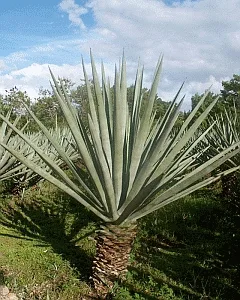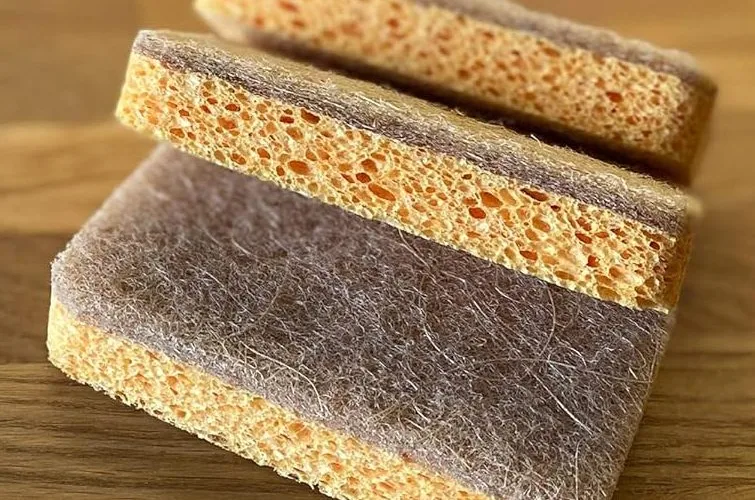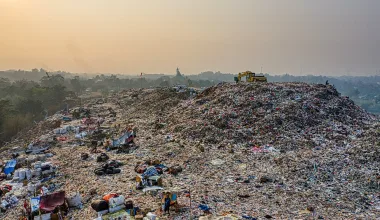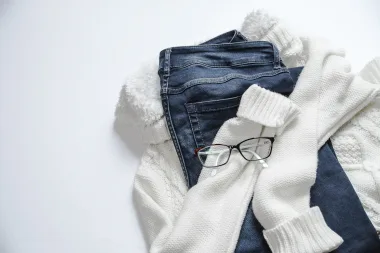Last Updated on August 30, 2024 by Ecologica Life
Disclaimer: This post is sponsored, but the recommendations and opinions are my own.
I was cleaning the dishes one day and I saw bits of green on one of my plates. I realised my sponge was deteriorating and, to my horror, releasing microplastics!
In my latest step towards a plastic-free life, I’ve turned my attention to an unlikely culprit in our kitchens: the dishwashing sponge.
I am always looking for alternatives to plastic. Recently, I decided to purchase some natural kitchen sponges and compare them against their plastic counterpart.
In this article we’ll be exploring the problems with sponges. We will also examine these eco-friendly alternative sponges and see if they are any good.
Table of Contents
The Problems with Sponges
Your normal everyday sponge is probably made from cellulose and plastic. If you’re not aware of the problems with plastic pollution, we have a whole series of articles dedicated to it. Sponges are a culprit because they release microplastics.
Microplastics are a serious problem. They result of the degradation of plastic into tiny fragments that are barely visible to the human eye. Microplastics can later degrade into nanoplastics.
What are these microplastics and nanoplastics made of? A whole range of substances. The scary thing is that they are ubiquitous in the environment. This means they are everywhere, in the oceans, in tea, in the air, and even in our blood. That’s right folks, microplastics have been found in human blood.
The next question is, how are these microplastics affecting our health? The answer: we don’t know yet. But nanoplastics have been shown to cross the blood-brain barrier (BBB), and that in itself is a cause for concern. That said, more research is needed to understand the scope of the problem.
So what can we do? How can we tackle this problem? Big action starts small. We all need to reduce the amount of plastic we use in our lives. What can you do in your life to reduce the amount of plastic you use? If you are unsure, the My Plastic Free Life blog has a great 100 step guide.
What are Microplastics? Should You Be Worried?
What Are Natural Dish Sponges Made From?
Natural sponges are made in a variety of ways. From harvesting sea sponges to using plant material. For the sake of brevity, I will only discuss the sponges that I have purchased. These sponges are made from cellulose (plant fibres or wood pulp) and sisal, a Mexican plant that can be used to make rope.

The sisal is used to make the rough side of the sponge, while the cellulose makes up the softer back. This is more sustainable than typical plastic sponges for several reasons:
- Renewable Resources: Plant materials, such as cellulose and sisal, are renewable. This means they can be grown and harvested repeatedly without depleting the resource. In contrast, many synthetic sponges are made from non-renewable petroleum-based products.
- Biodegradability: Natural materials tend to be biodegradable, breaking down into harmless substances over time. Synthetic materials, especially those derived from plastics, can persist in the environment for hundreds to thousands of years. This leads to pollution buildup and harm to wildlife. (You can watch David Attenborough’s Our Planet 2 to see how plastics are killing birds).
- No Harmful Chemicals: Natural sponges do not contain harmful chemicals or additives that can be found in synthetic sponges. These chemicals can leach out over time, contaminating the environment and potentially posing a health risk.
Pros of Eco-friendly Cleaning Sponges
The biggest advantage for me is that these sponges are plastic free. No more microplastic pollution from my sponges!
They are also 100% biodegradable and compostable. However, the brand doesn’t say that these sponges are home compostable. Be aware that biodegradable and compostable often means ‘under the right conditions’.
Aside from that they work just as well as regular sponges. I’ve been using them for a couple of weeks now (still on my first one) and I prefer them to regular plastic sponges.
Cons of Eco-friendly Cleaning Sponges
While trying to save the world from plastic, I was disappointed to find that my sponges were delivered in plastic packaging. I do suppose it’s important to keep them dry, but books don’t come in plastic when I buy them from Amazon. A paper or cardboard box would have been a preferable alternative.
The only other thing is the price. They cost me 12 euros (10 pounds) for a pack of six, which is a little more expensive than their plastic counterparts. That said, I am happy to say that it is money well invested.
It should be said that these sponges are a bit more rigid than plastic sponges to begin with. Their inflexibility made them a little harder to use, but after the first couple of days they become much more flexible.
Conclusion
I would recommend these environmentally friendly sponges. They do the job nicely and it was an easy switch to reduce plastic waste and microplastics. I can wash dishes with a clear head.
How are you reducing plastic in your life? Have you tried natural sponges? Share your own experiences or tips for reducing plastic use in the comments below.








